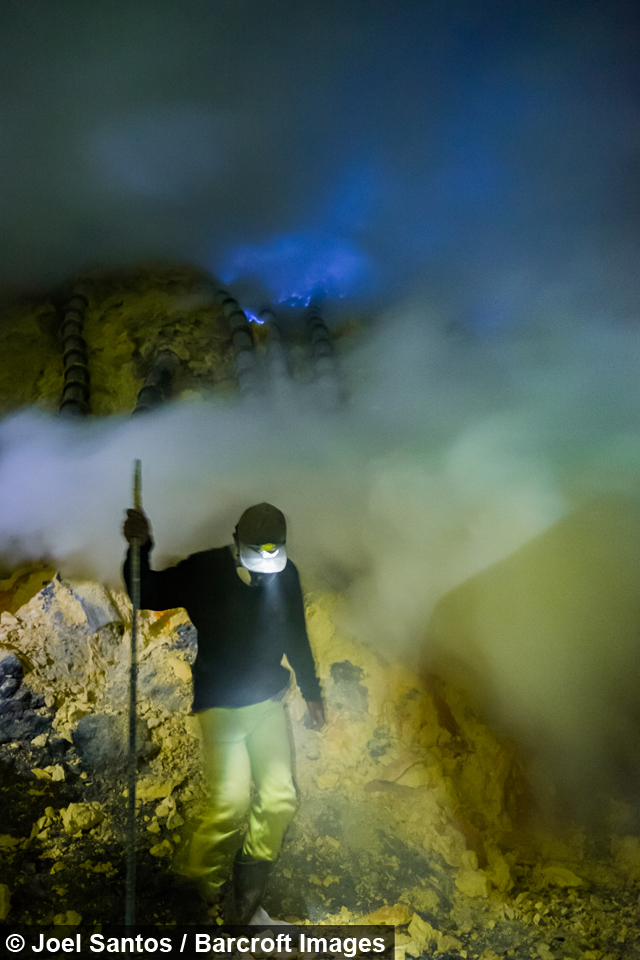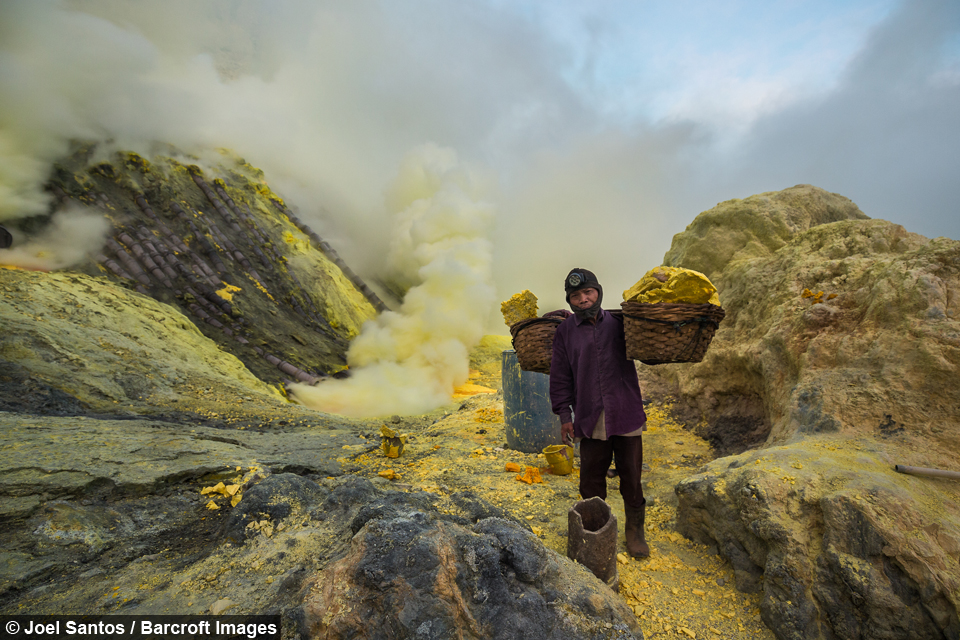Workers face brutal conditions in eerily beautiful sulphur mines
By Hannah Stevens @Hannahshewans
Scroll down for the full story
Men working in Ijen - a volcanic range stretching across East Java, Indonesia - have a short life expectancy due to the punishing conditions they face every day in the depths of the mines.
Many workers have little protection from the noxious fumes wafting out of the volcano as they mine alongside the world’s largest acidic crater lake - which has a pH level of 0.5.
Travel and nature photographer Joel Santos first visited the mines in 2005 and revisited the acrid mines again in 2014 and 2015 to capture their enduring conditions.
He said: “In order to get to the top of Kawah Ijen you have to trek for about two and half hours from the nearest dirt road.
“As you trek up the steep and rocky path you’re surrounded by vegetation at first, then it gradually starts to decrease and the first sulphur fumes start to fill your lungs.
“It is only unveiled in the last three minutes of ascension. As soon as you’re on the rim of the crater, you get an overwhelming glance at this huge crater with a turquoise blue acid lake with huge columns of smoke rising from the sulphur extraction site, also lit by what the locals call the ‘blue fire’.
“The scenario is otherworldly, a Martian-like landscape - marvellous and suffocating at the same time — paradoxically, the beautiful natural stage where the hellish lives of the miners unfold.”
Due to a slight lack of preparation, Santos recalls his first trip into the bowels of the volcano’s neighbouring mines as a suffocating experience.
The Portuguese photographer said: “In 2005, I did not have a mask and when I got to the bottom of the crater, where the miners extract the sulphur, my lungs burned painfully, especially when the winds pushed the smoke to the ground and I nearly asphyxiated.
“Back then the miners did not use masks, only their wet t-shirts over the mouth to filter the fumes, which was what I did too.
“Nevertheless, in 2011, 2014 and 2015 I had proper masks and most of the miners did too, since they kept getting them from visitors, which made it slightly more bearable, but the smell still prevails.
“I have a feather jacket that, even several months and many washes after, still keeps the sulphur odour.”
Although Santos was entranced by the beauty of the mines, his trip also provided a harsh reality check when he saw the miner’s brutal daily routine.
“Witnessing the miners working at night, with the stars, full moon and the blue fire lighting them up, the canary yellow sulphur, and the fumes all created an unreal atmosphere.
“Documenting the miners breaking the recently solidified sulphur chunks, putting them on wooden double baskets and then carrying up to 90kg of it 1km up to the rim - a 60 degree slope or more - and then another 3km down the rim is something I will never forget.
“It gives you a sense of perspective about your own life. Many of the workers had a disguised back, deformed spine or bent legs, adding to an extremely low life expectancy.”








